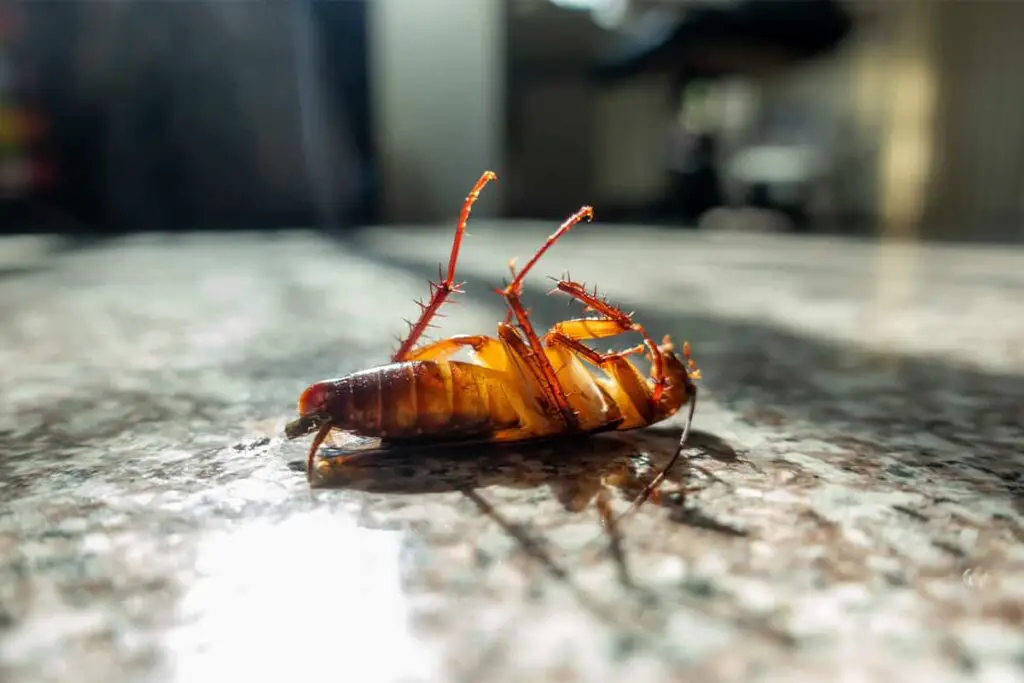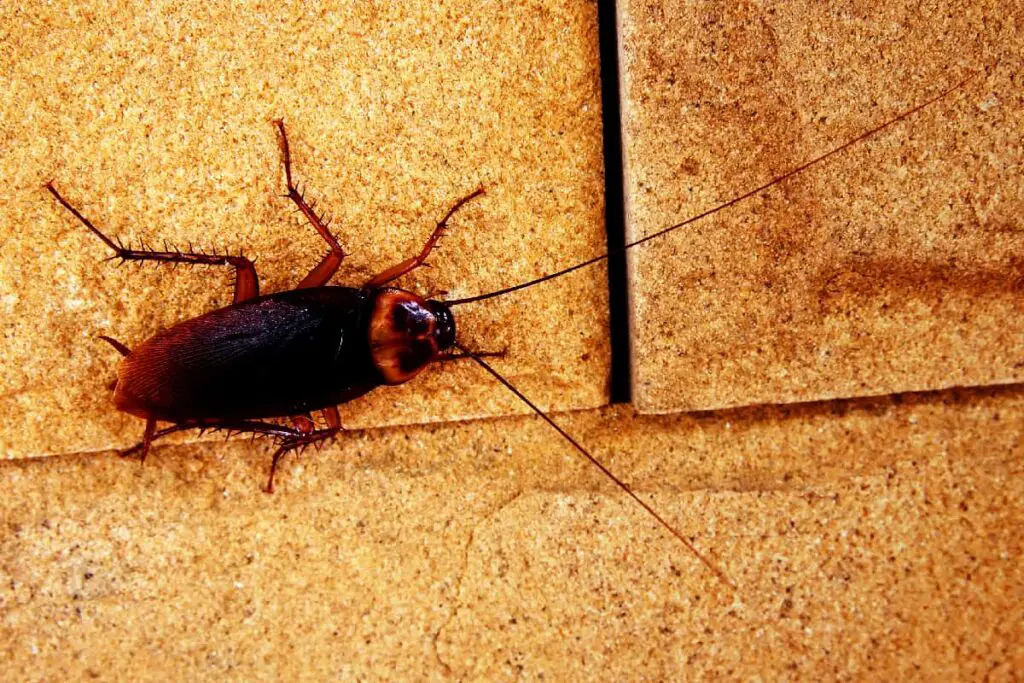
Cockroaches are primarily known for their resiliency and unwelcome presence in homes around the world. What isn’t as widely known is that these persistent pests can produce noises. In fact, you might be surprised to learn that cockroaches have a variety of signaling sounds they use for communication and interaction within their species.
While the sounds are not part of their reputation, the noise cockroaches make is quite distinctive once you know what to listen for. They can chirp, click, and hiss, usually as a means of communicating with each other. These sounds can be related to mating calls, social interactions, or even as alarms when they feel threatened. Understanding why and how these insects make noise could offer you insight into the hidden life of one of the world’s most common household intruders.
Cockroach Communication
Cockroaches communicate in various ways, and two of the most distinctive forms of their communication are through sounds like stridulation and hissing. These sounds serve specific purposes in their behavior and interaction.
Stridulation
Cockroaches produce a scratching or rubbing sound by moving parts of their bodies against each other; a behavior known as stridulation. This is often related to social interactions between the insects or can be a response to disturbances in their environment. The sounds created through stridulation are particularly important during mating rituals, as it can help cockroaches to attract a mate.
Hissing
Another audible form of communication among cockroaches is hissing. This noise is produced when they forcefully expel air through their spiracles. It is a defensive behavior typically used when they feel threatened. Some species, like the Madagascar hissing cockroach, are well-known for this vocalization and use it as a way to deter predators or during confrontations with other cockroaches.
By understanding these communication methods, you can gain insights into the presence and behavior of cockroaches in your surroundings.
Factors Influencing Cockroach Sounds
In exploring the acoustic world of cockroaches, remember that not all roaches are the same; their noises can vary based on species, behavior, and the environment they’re in.
Species
Different species of cockroaches have distinct sound profiles. For instance, the Madagascar hissing cockroach is notorious for its loud hiss, which it uses as a defense mechanism or to communicate with other roaches. This contrasts with other species, which may produce more subtle clicking or chirping sounds during mating or when threatened.
Behavior
Cockroach behavior greatly impacts the sounds they make. Two primary behaviors you might hear are mating calls and the sound of cockroaches when they feel threatened. During these times, they might make clicking or chirping sounds, which can serve as an alert to their presence.
Environment
The acoustics of a roach’s environment can affect how sound travels and how you perceive it. A confined space, like the inside of your wall, might amplify even the subtle noises a cockroach makes, such as stridulation or crepitation. On the other hand, open and less cluttered spaces might make these sounds harder to detect.
Detecting and Identifying Cockroach Noises
When you’re trying to uncover the presence of cockroaches in your home, being able to detect and identify the sounds they make can be quite helpful. Here’s a simple guide to understanding cockroach acoustics:
Stridulation: This is a sound made when cockroaches rub their body parts together, typically their wings or legs. Listen for a scratching or chirping sound, which could indicate that cockroaches are nearby.
Crepitation: This less common noise sounds like a crackling or popping. It results from air passing through the breathing tubes of cockroaches.
Sonation: In rare instances, you might hear an audible croak coming from a cockroach.
To identify these sounds, follow these steps:
Quiet Your Environment: Reduce background noise to listen closely, especially during the night when it’s more likely to hear them.
Listen Near Suspected Areas: Focus your attention to places where you’ve noticed other signs of cockroach activity, such as in the kitchen or basement.
Use a Stethoscope: For pinpointing sound within walls, a stethoscope can be a surprising but effective tool.
Remember, cockroach noises are faint and not always audible to the human ear. If you suspect an infestation due to strange sounds, it’s advisable to consult with a pest control professional. Detecting these sounds can be an early warning of cockroach activity, prompting more immediate and effective pest control measures.
Implications of Cockroach Noises
Cockroach noises have varying implications that can be particularly relevant if you encounter these pests at home or if you’re involved in entomological studies.
Pest Control
When you hear cockroach noises such as hissing or chirping, it often indicates the presence of these insects nearby. For instance, the distinctive hissing of the Madagascar hissing cockroach is part of its mating ritual and can also signal alarm, suggesting an underlying infestation that might require intervention. Regular pest control practices may be warranted to address and prevent the spread of roaches in your environment.
Behavioral Research
For researchers, the various noises cockroaches make, like chirping or clicking, can be insightful for studying their behavior. These sounds are typically produced by adult male cockroaches for communication, especially during mating season. Knowledge of these sounds can help in understanding the social dynamics of cockroach populations and their interaction with the environment.
Frequently Asked Questions
Diving into the world of cockroach sounds can be surprising, as these insects are more vocal than you might expect. Let’s explore some common inquiries about the acoustic behaviors of cockroaches.
What sound does a hissing cockroach make?
Hissing cockroaches are named for the distinctive hissing noise they produce, which occurs when they forcefully expel air through their breathing pores, called spiracles. This sound is often used as a defense mechanism against predators.
Do cockroaches chirp like crickets?
Yes, some cockroaches can make chirping sounds similar to crickets. These sounds are created as a way for cockroaches to communicate with each other, especially in the context of mating or signaling danger.
Can you hear cockroaches at night?
It is possible to hear cockroaches at night, especially since they are nocturnal and more active during this time. The noises you might hear include soft chirping or hissing sounds that can be surprisingly loud in a quiet environment.
Is it common for cockroaches to make a clicking sound?
While not as common as chirping or hissing, cockroaches may produce a clicking sound, which is thought to be another form of communication among these insects.
How loud is the chirping noise made by cockroaches?
The volume of chirping in cockroaches can vary, but it’s generally not very loud. These noises are often high-frequency and can be more easily heard when the surroundings are quiet.
Do cockroaches make any noise when they die?
Cockroaches do not typically make noise as a result of dying. However, if they are injured or distressed, they might emit noises to signal other cockroaches or as an instinctual response.
Driven by a passion for those tiny creatures that rule our world, we at Bug Domain strive to be your go-to resource for information on insects.



